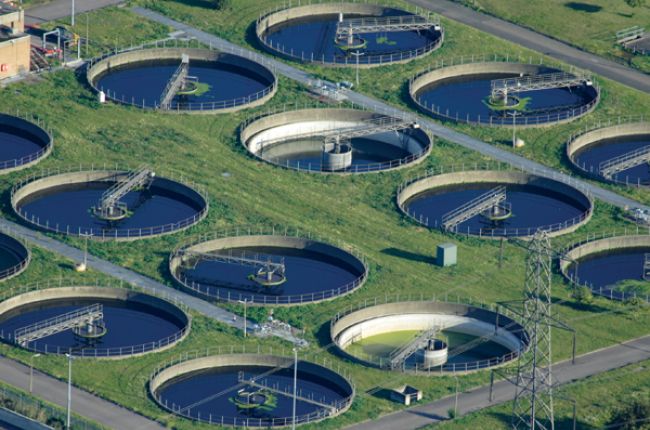Strategic Approaches to Improve Drainage Therapy Efficiency and Reduce Environmental Impact
In the world of waste water treatment, the pursuit for improved efficiency and minimized ecological impact is a continuous challenge that requires critical options. The integration of advanced treatment innovations, energy-efficient processes, source healing strategies, boosted nutrient removal techniques, and clever tracking and control systems stands for a diverse structure for resolving these pressing concerns.
Advanced Treatment Technologies
Advanced membrane layer purification systems have transformed innovative wastewater therapy procedures, significantly improving the removal of pollutants. These cutting-edge systems function forcibly water through a semi-permeable membrane, effectively dividing pollutants from the water stream. The membrane's microscopic pores catch contaminants such as microorganisms, viruses, and suspended solids, enabling only purified water to pass through. This modern technology has actually proven to be extremely effective in removing a vast array of contaminants, consisting of pharmaceuticals, hefty steels, and natural compounds, which are typically testing to eliminate via typical therapy techniques.
Additionally, membrane layer purification systems supply countless advantages over conventional treatment strategies. Additionally, these systems are extremely versatile and can be conveniently incorporated right into existing therapy plants or utilized as standalone units for decentralized applications.
Energy-Efficient Procedures
The assimilation of energy-efficient procedures in wastewater treatment systems is vital for optimizing resource application and decreasing operational prices. By applying energy-efficient modern technologies, treatment plants can significantly reduce their carbon footprint and total ecological effect. One essential strategy to boosting energy effectiveness in wastewater treatment is the application of innovative aeration systems, such as fine bubble diffusers or surface area aerators, which can enhance oxygen transfer performance and lower energy intake. Additionally, incorporating power healing systems, like anaerobic digestion for biogas manufacturing or utilizing excess warm for thermal processes, can help counter power demands and promote sustainability.
In addition, optimizing procedure control and automation with using innovative sensors and keeping track of systems can improve total energy effectiveness by readjusting operations in real-time based on actual need and conditions. Implementing power audits and routinely monitoring power efficiency signs are vital practices to determine areas for improvement and track energy-saving efforts properly. Generally, the fostering of energy-efficient processes in wastewater therapy not only benefits the setting however also adds to lasting price savings and operational sustainability.
Resource Healing Approaches
With a focus on enhancing resource use and sustainability in wastewater treatment systems, the implementation of source recuperation techniques becomes an essential element in improving functional efficiency. Source healing methods in wastewater treatment include the recognition and extraction of useful resources from the waste stream, thus turning what was once thought about waste right into an important possession. By implementing resource recovery strategies such as nutrient elimination and recovery, power generation from natural issue, and the manufacturing find here of reusable water, wastewater treatment plants can decrease ecological influence while taking full advantage of effectiveness.

Enhanced Nutrient Removal Techniques
Executing advanced nutrient elimination methods is essential for maximizing the efficiency of wastewater treatment systems. Improved nutrient removal plays a vital role in reducing the ecological influence of my review here treated effluent released into water bodies. Among the crucial techniques utilized for enhanced nutrient elimination is the process of biological nutrient removal (BNR), which entails the removal of nitrogen and phosphorus via organic processes. This can be accomplished through making use of specialized microbes that can transform nitrogen compounds right into inert nitrogen gas via denitrification, and build up phosphorus within their cells with a procedure called boosted organic phosphorus elimination (EBPR)

In addition to BNR, advanced therapy methods such as membrane layer bioreactors (MBRs) and created marshes can additionally be utilized to enhance nutrient removal effectiveness. By incorporating these innovative nutrient elimination techniques into wastewater treatment markets, municipalities and systems can efficiently minimize nutrient contamination and protect the atmosphere.
Smart Surveillance and Control Systems
Using innovative modern technology, the combination of clever tracking and control systems transforms the functional effectiveness of wastewater treatment centers. These systems integrate home sophisticated sensing units and data analytics to continuously keep an eye on crucial specifications such as pH degrees, turbidity, dissolved oxygen, and flow prices in real-time. By accumulating and evaluating this information, drivers can acquire beneficial insights into the performance of the treatment processes, allowing proactive changes to maximize therapy efficiency.
Smart surveillance and control systems additionally sustain remote tracking capabilities, allowing operators to gain access to real-time data and control functions from off-site places. This remote accessibility improves operational adaptability and responsiveness, enabling swift treatments in situation of system breakdowns or fluctuations in influent top quality. The anticipating upkeep capabilities of these systems help prevent devices failures and reduce downtime, inevitably improving the total reliability of wastewater therapy operations.
Final Thought
Finally, calculated strategies such as innovative treatment technologies, energy-efficient procedures, resource recuperation techniques, enhanced nutrient elimination methods, and clever monitoring and control systems play a critical duty in improving wastewater therapy efficiency and decreasing environmental effect. By executing these strategies, wastewater treatment plants can enhance their total efficiency, lower energy usage, recuperate useful resources, and make certain conformity with environmental laws. These strategies are essential for lasting and efficient wastewater administration techniques.

In conclusion, calculated techniques such as advanced therapy modern technologies, energy-efficient procedures, resource healing methods, enhanced nutrient elimination strategies, and smart monitoring and control systems play a crucial function in enhancing wastewater treatment efficiency and minimizing ecological influence.